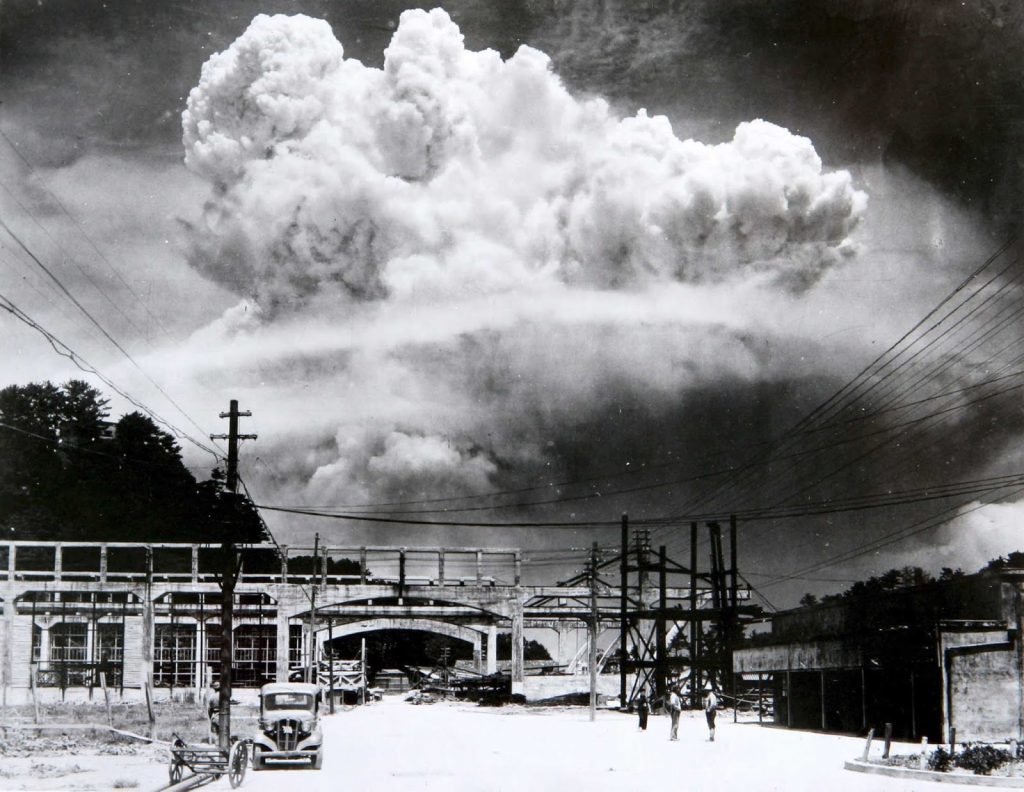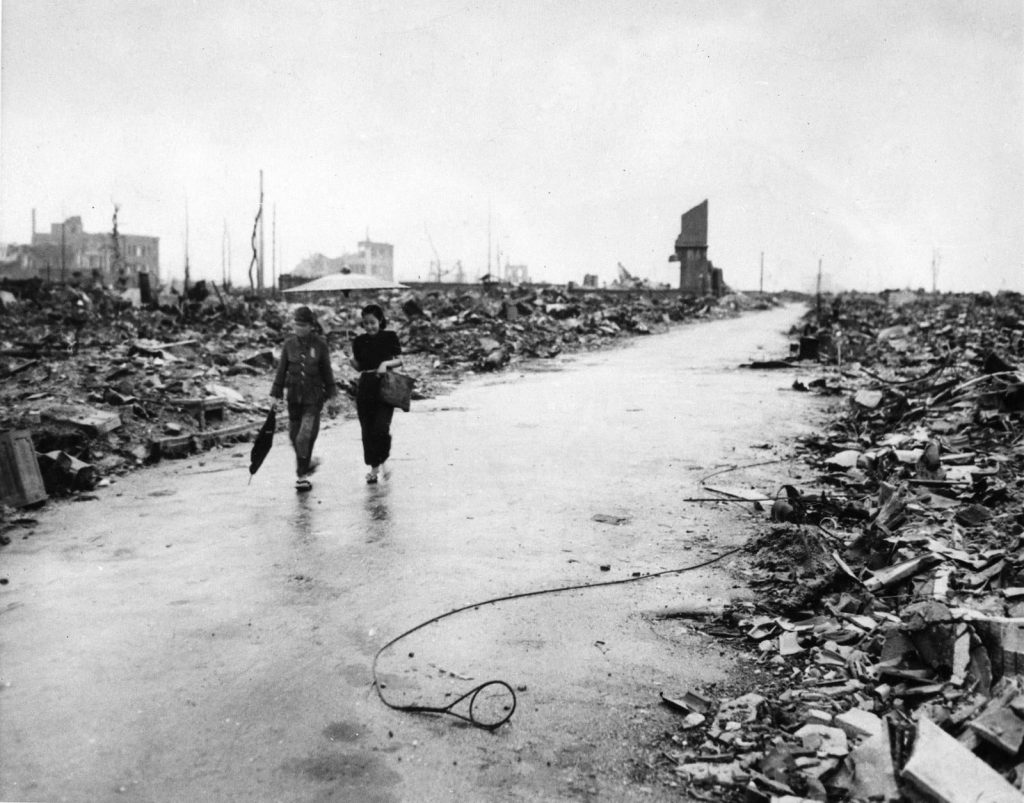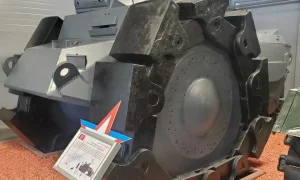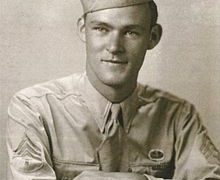Nagasaki during World War II
Nagasaki in 1945 was located in two valleys, through which two rivers flowed. The mountain range divided the districts of the city.
The development was chaotic: out of the total city area of 90 km², 12 were built up with residential quarters.
During the Second World War, the city, which was a major seaport, also acquired special significance as an industrial center, in which steel production and the Mitsubishi shipyard, Mitsubishi-Urakami torpedo production were concentrated. Guns, ships and other military equipment were made in the city.
Nagasaki was not subjected to large-scale bombing until the explosion of the atomic bomb, but as early as August 1, 1945, several high-explosive bombs were dropped on the city, damaging shipyards and docks in the southwestern part of the city. Bombs also hit the steel and gun factories of Mitsubishi. The August 1 raid resulted in a partial evacuation of the population, especially schoolchildren. However, at the time of the bombing, the population of the city was still about 200 thousand people.
 Bombardment
Bombardment
The main target of the second American nuclear bombing was Kokura, the spare was Nagasaki.
The second atomic bombing was scheduled for August 11, but was postponed two days earlier to avoid a five-day period of bad weather, which was predicted to begin on August 10.
At 2:47 a.m. on August 9, an American B-29 bomber under the command of Major Charles Sweeney, carrying the Fat Man atomic bomb, took off from Tinian Island.
Unlike the first bombardment, the second was fraught with numerous technical problems. Even before takeoff, a malfunction of the fuel pump in one of the spare fuel tanks was discovered. Despite this, the crew decided to conduct the flight as planned.
At approximately 7:50 am, an air raid alert was issued in Nagasaki, which was canceled at 8:30 am.
At 08:10, after reaching the rendezvous point with other B-29s participating in the sortie, one of them was found missing. For 40 minutes, Sweeney’s B-29 circled around the rendezvous point, but did not wait for the missing aircraft to appear. At the same time, reconnaissance aircraft reported that the clouds over Kokura and Nagasaki, although present, still allow bombing under visual control.
At 08:50, B-29, carrying the atomic bomb, headed for Kokura, where it arrived at 09:20. But by this time, 70% cloud cover was already observed over the city, which did not allow visual bombing. After three unsuccessful visits to the target, at 10:32 B-29 headed for Nagasaki. At this point, due to a fuel pump malfunction, there was only one pass of fuel left over Nagasaki.
At 10:53, two B-29s came into the air defense field of view, the Japanese mistook them for reconnaissance and did not announce a new alarm.
At 10:56 B-29 arrived at Nagasaki, which, as it turned out, was also obscured by clouds. Sweeney reluctantly approved a much less accurate radar approach. But at the last moment, the bombardier-gunner Captain Kermit Behan (eng.)in the gap between the clouds noticed the silhouette of the city stadium, focusing on which, he dropped the atomic bomb.
The explosion occurred at 11:02 local time at an altitude of about 500 meters. The power of the explosion was about 21 kilotons.
Explosive Effect
A hastily aimed bomb exploded almost midway between the two main targets in Nagasaki, the Mitsubishi steel and gun factories to the south and the Mitsubishi-Urakami torpedo factory to the north. If the bomb had been dropped further south, between the business and residential areas, the damage would have been much greater.
In general, although the power of the atomic explosion in Nagasaki was greater than in Hiroshima, the destructive effect of the explosion was less. This was facilitated by a combination of factors – the presence of hills in Nagasaki, as well as the fact that the center of the explosion was located above the industrial zone – all this helped to protect some areas of the city from the effects of the explosion.
From the memoirs of Sumiteru Taniguchi, who was 16 years old at the time of the explosion:
I was knocked to the ground (from my bike) and the ground shook for a while. I clung to her so as not to be carried away by the blast wave. When I looked up, the house I had just passed was destroyed… I also saw the child being blown away by the blast. Large rocks were flying in the air, one hit me and then flew up into the sky again…
When everything seemed to calm down, I tried to get up and found that on my left arm the skin, from the shoulder to the fingertips, was hanging like tattered tatters.


Loss and destruction
The atomic explosion over Nagasaki affected an area of approximately 110 km², of which 22 km² were water surface and 84 km² were only partially inhabited.
According to a report from Nagasaki Prefecture, “people and animals died almost instantly” up to 1 km from the epicenter. Nearly every home within a two-kilometer radius was destroyed, and dry, combustible materials such as paper ignited up to three kilometers from the epicenter. Of the 52,000 buildings in Nagasaki, 14,000 were destroyed and another 5,400 were severely damaged. Only 12% of the buildings remained intact. Although there was no fire tornado in the city, numerous localized fires were observed.
The death toll by the end of 1945 was between 60,000 and 80,000 people. At the end of five years, the total number of deaths, taking into account deaths from cancer and other long-term effects of the explosion, could reach or even exceed 140 thousand people.












